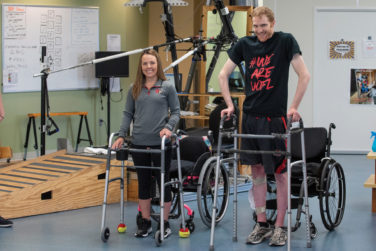Not enough people in the healthcare media industry recognize the importance of attending what is the largest tradeshow in the world—the Consumer Electronics Show (CES). Marketers need to understand how consumers (which prescribers and patients both are) will engage in the near- and long-term future. If we don’t know where consumers’ attention will live, we can’t build innovative solutions to drive business results for our clients. CES provides us a glimpse of next-to-market technologies and how consumers will engage with them.
The focus on healthcare has skyrocketed in recent years to the point where a healthcare-centric conference track, the Digital Health Summit, now exists. This year the summit included dynamic presentations and discussions focused on advances in precision medicine, mobile, and AI and deep machine learning.
Compared to previous years, less wearable devices were seen on the show floor. However, those present were mostly for a singular purpose—gathering data for digital health management. The IPG Media Lab regards this as a necessary developmental stage for wearables to shed off some of the inflated expectations of earlier years and refocus in a use case where it can truly provide value for consumers.
CES Healthcare Stars
The healthcare star of the show was a device called ReNu from NuCalm. Users get the equivalent of two hours of sleep in a mere twenty minutes. It sounds too good to be true, but based on firsthand experience—everyone will want one. After waking from our power naps, my colleague and I tackled the floor—energized.
Many devices focused on improved healthcare. For example, a Fitbit for your ear tracks hearing health, an implant tracker monitors orthopedic implants and sends RFID updates, and a connected athletic mouth guard evaluates crash impact. And, considerably more personalization using AI due to the consolidation of data, allows for a focus on precision medicine.
The reality is, however, that healthcare gadgets are only a small part of what we should be focusing on in healthcare marketing. What’s really important is to understand: Where people’s attention is spent and how we can leverage that from a media perspective in the coming years.
With Amazon’s Alexa having dominated 2017, this year a significant focus is on the integration of Google Assistant within a variety of products including TVs, smart locks, ceiling fans, and appliances. Google also debuted the Google Smart Display, Google’s response to the Echo Show. All of these products contributed to what has clearly become a battle for the home.
But healthcare is a significant part of CES and innovation in both consumer entertainment tech gadgets and health-centric devices are multiplying at an astronomical rate. Even the new connected cars have integrated health-centric features and biometric monitors in their offerings. As people’s attentions are drawn further from the computer screen and their interactions become more voice-centric, it’s important to know how and where to engage with your customers and to evolve your media plans accordingly.







